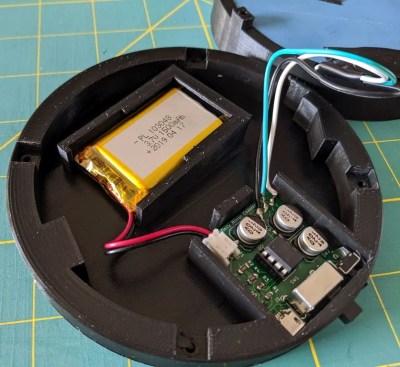We can probably all relate to the origin story of this one. [Alex] was working on a bigger, more involved clock project when this cute little desk clock idea caught his mind’s eye. Who wouldn’t want a clock with character and a little bit of an attitude?
This little guy’s brain is an ItsyBitsy M0 Express, and he gets his time data from an Adalogger FeatherWing RTC. Those antennae aren’t just for looks – [Alex] chose the ItsyBitsy because it can easily do capacitive touch out of the box without extra components. In the brief demo after the break, [Alex] shows how touching them triggers either an animated face or a still face before switching to the clock face.
We love functional circuit sculptures, especially ones with this much character. [Alex] was inspired by [Mohit Bhoite]’s breathtaking circuit sculptures and seems to follow his great example of laying it all out on paper first. Incidentally, our last HackChat before Supercon starred [Mohit] and his circuit sculptures. Missed it? Read the transcript here.
Continue reading “CircuitPython Sculpture Clock Adds Character To Any Desk”

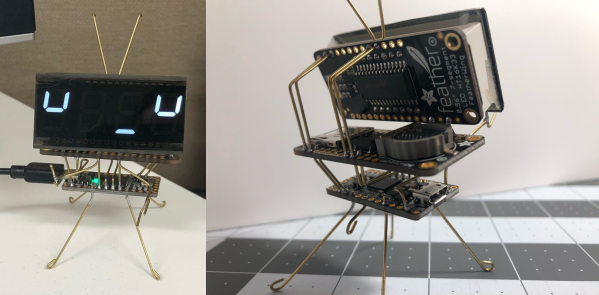
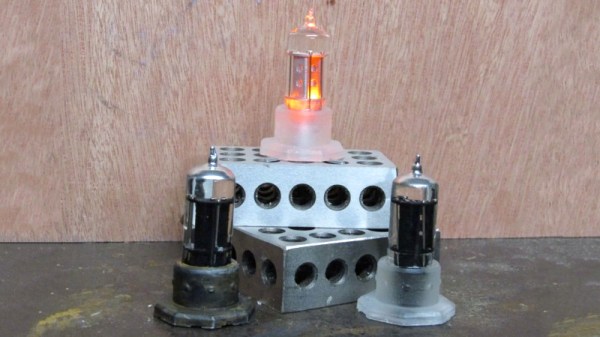

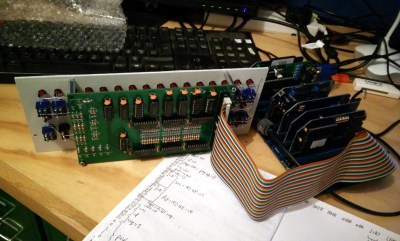
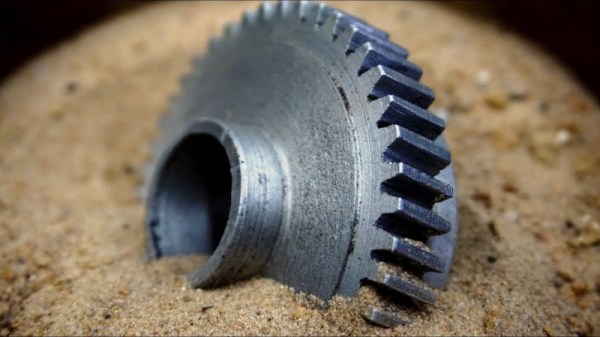
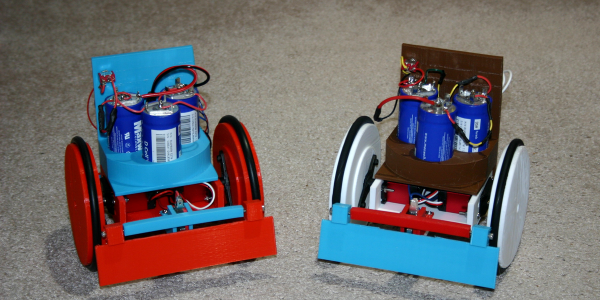



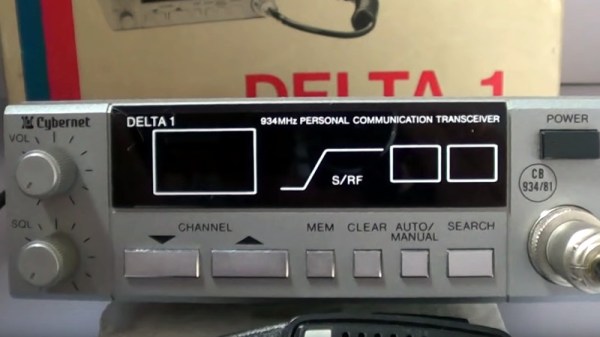
![Did this car make you want a CB radio? Stuurm [CC BY-SA 3.0]](https://hackaday.com/wp-content/uploads/2019/10/1978_Trans-Am_bandit.jpg?w=400)

